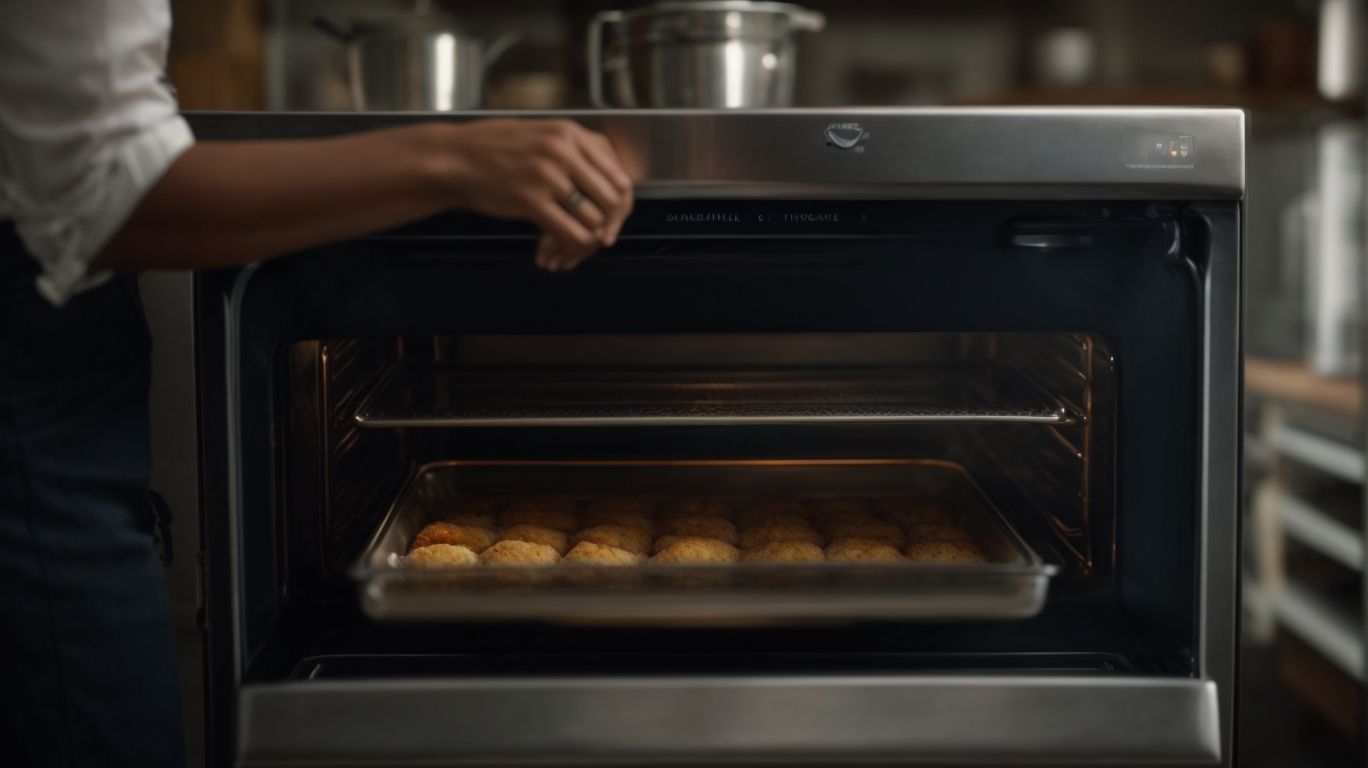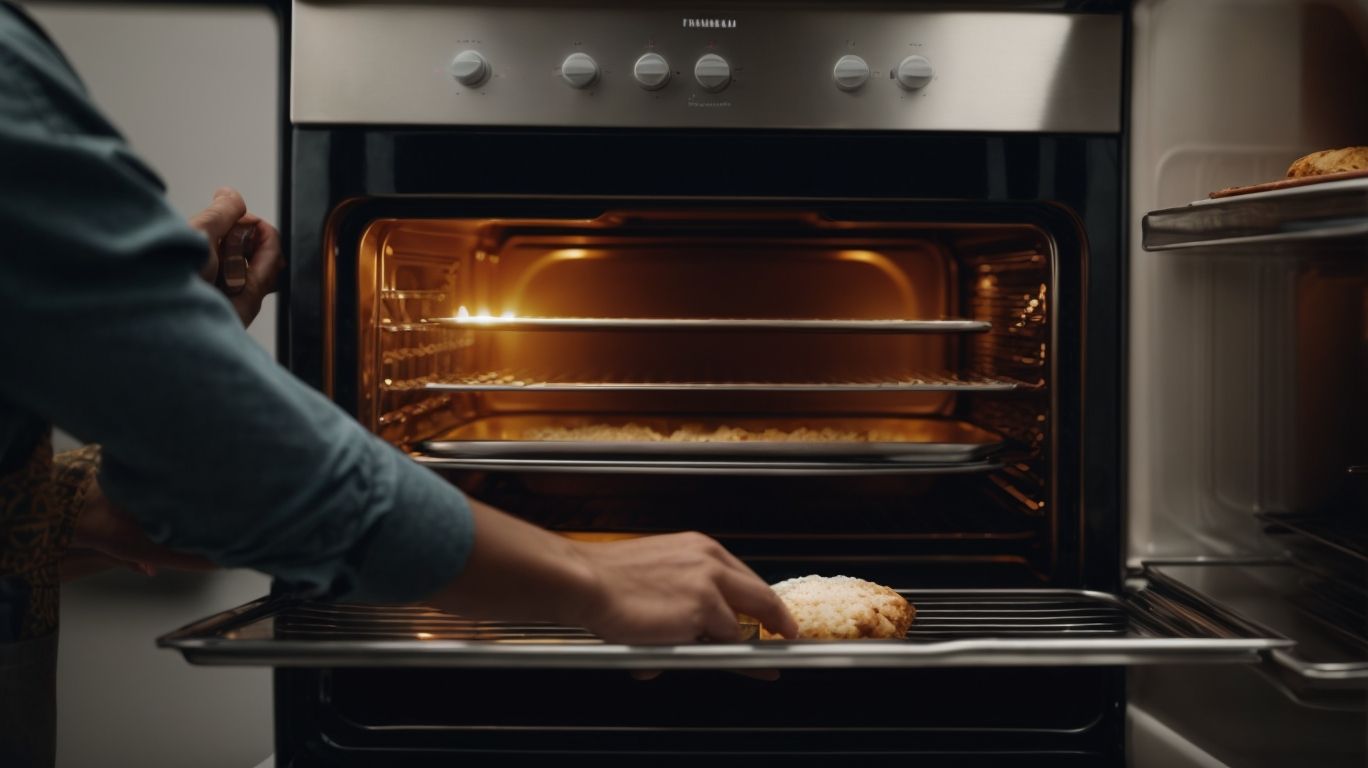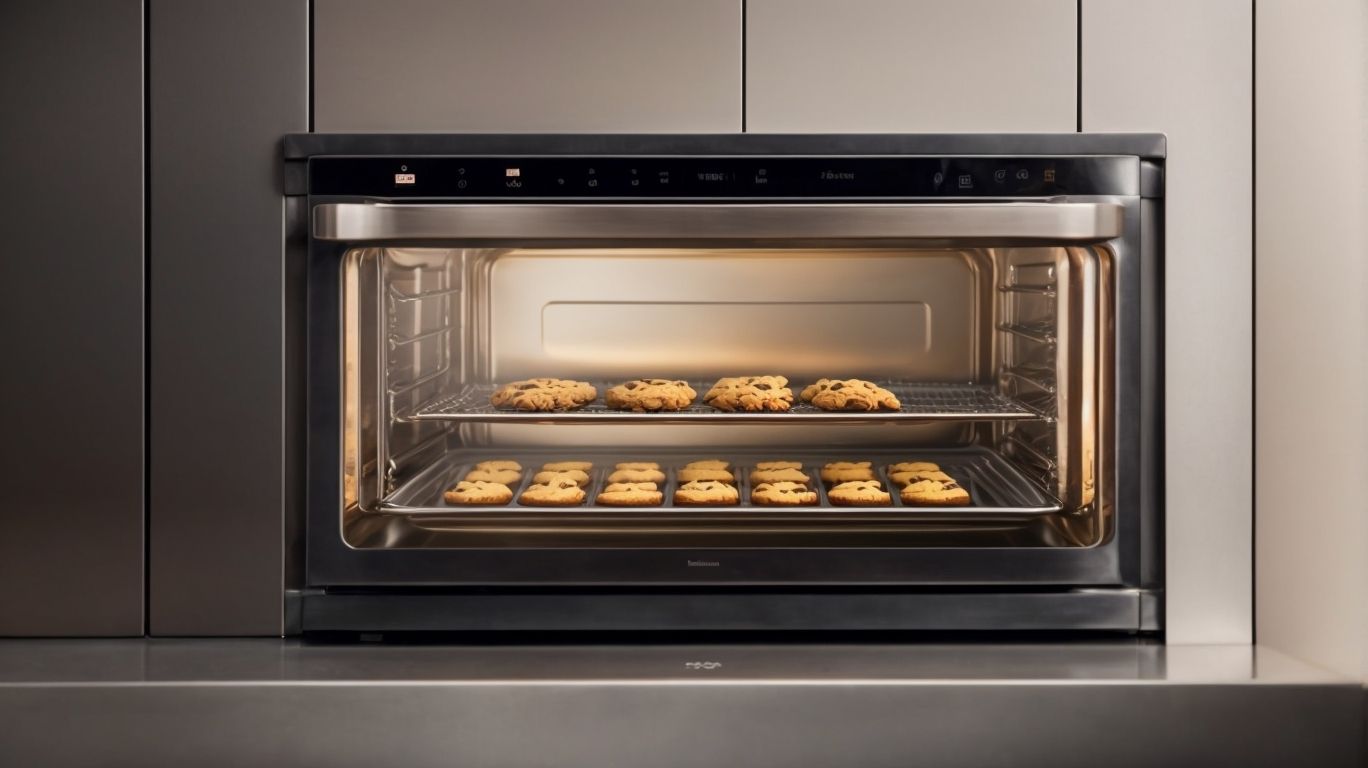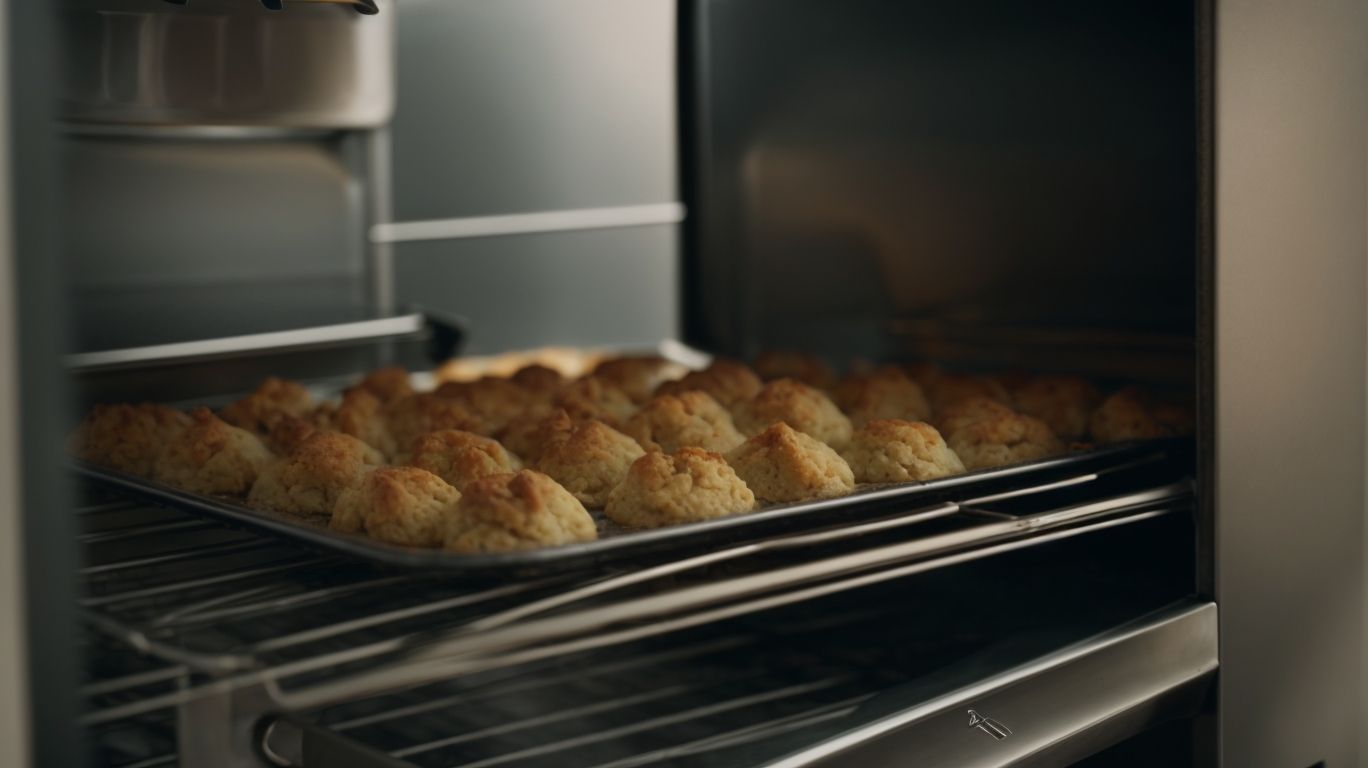How to Bake in Convection?
Have you ever wondered what a convection oven is and how it can elevate your baking game?
In this article, we will explore the ins and outs of convection baking, including the benefits, tips, and common mistakes to avoid.
Using a convection oven can revolutionize the way you bake, from faster cooking times to crisper results. Whether you’re a seasoned baker or just starting out, learn how to make the most out of your convection oven for perfect baked goods every time.
Key Takeaways:
What Is a Convection Oven?
A convection oven is a kitchen appliance that utilizes a fan and exhaust system to circulate hot air around the food for faster and more even cooking.
This circulation of hot air helps in distributing heat more efficiently compared to a traditional oven. The fan in the convection oven ensures that the hot air is constantly moving around the food, eliminating hot spots and cold areas, leading to consistent cooking.
The air circulation process in a convection oven also helps in reducing cooking times as the heat is transferred more effectively to the food’s surface. As a result, dishes cooked in a convection oven often have crispy exteriors while staying moist on the inside, making it a preferred choice for baking, roasting, and even reheating leftovers.
What Are the Benefits of Convection Baking?

Credits: Poormet.Com – Russell Clark
Convection baking offers several benefits, including faster cooking times, enhanced browning and crisping, and improved overall results for various types of food.
Regarding baking, convection ovens have become a popular choice due to their ability to circulate hot air evenly around the food, resulting in faster and more even cooking. This process not only helps in achieving that coveted golden brown crust on baked goods but also ensures that foods like roasted vegetables and meats come out beautifully crispy and delicious.
The improved air circulation and heat distribution in convection ovens also make them ideal for cooking dishes such as pizzas, pastries, and cookies. These items tend to cook more evenly, with a consistent texture and taste throughout. Whether you are a seasoned baker or just someone who loves good food, utilizing a convection oven can truly elevate your culinary creations.
Faster Cooking Time
One of the key benefits of convection baking is the significant reduction in cooking time compared to traditional ovens, thanks to the efficient hot air circulation.
When you use a convection oven, the fan inside circulates hot air around the food, allowing it to cook more evenly and up to 25% faster than in a conventional oven. This accelerated cooking process not only saves time but also preserves nutrients and moisture in the food, resulting in juicier meats and crispier baked goods.
For example, if you were to bake a batch of cookies in a traditional oven, it might take 15-20 minutes, whereas in a convection oven, the same cookies could be ready in just 10-15 minutes. This time-saving advantage is particularly beneficial for busy individuals looking to streamline their meal preparation without compromising on taste or quality.
More Even Cooking
Convection baking ensures more even cooking throughout the food, eliminating hot spots and providing consistent results due to the uniform air circulation within the oven.
This uniform distribution of hot air in a convection oven is achieved through a fan that continuously circulates the heated air, enveloping the food from all angles. As a result, the food is cooked more evenly, with no area being subjected to excessive heat or cold spots. This not only speeds up the cooking process but also ensures that each part of the dish receives the same amount of heat, leading to a thoroughly cooked and perfectly browned outcome.
Crisper Results
Convection baking leads to crisper results by enhancing browning and crisping on the exterior of foods, creating a desirable texture and visual appeal.
This cooking method achieves this by utilizing a fan to circulate hot air around the food, ensuring even heat distribution. As a result, the heat is transferred more efficiently, leading to faster cooking times and a more consistent outcome. The airflow in convection ovens helps remove moisture from the surface of the food, promoting that coveted crispy crust or golden brown finish. This external crispiness not only enhances the overall presentation of dishes but also contributes to a delightful contrast in textures, making each bite more satisfying.
How to Use a Convection Oven for Baking?

Credits: Poormet.Com – Nicholas Scott
To effectively use a convection oven for baking, it is essential to refer to the user’s manual provided by the manufacturer for specific guidelines on preheating, adjusting temperature, and rack placement.
Preheating your convection oven before baking is key to ensure even cooking and optimal results. Most user manuals recommend preheating the oven for a few minutes at the desired baking temperature. This step helps in creating the right environment for your baked goods to rise and bake evenly.
When adjusting the temperature in a convection oven, bear in mind that the cooking time may vary compared to a conventional oven. The built-in fan in a convection oven circulates hot air, allowing for quicker and more uniform baking. It’s advisable to lower the temperature by about 25 degrees Fahrenheit than what a recipe states for conventional baking.
Utilizing the oven racks efficiently can also impact your baking outcome. Make sure to follow the user manual’s guidance on the ideal rack position for different types of baked goods. Placing the racks correctly ensures that the hot air circulates evenly around the food, preventing uneven cooking.
Preheat the Oven
Preheating the convection oven ensures that the hot air is evenly distributed from the start, allowing for consistent cooking temperatures and optimal results.
When you preheat the oven before baking, it essentially prepares the environment for your dish to cook at the desired temperature right from the beginning. This initial boost of heat is crucial for items like pastries and bread, as it helps create that perfect rise or crisp exterior. Without preheating, your food might end up undercooked or unevenly cooked.
For recipes such as cakes and cookies, it is recommended to preheat the convection oven at least 10-15 minutes before placing the batter or dough inside. This ensures that the baking temperature is stabilized, allowing your treats to bake uniformly.
Adjust the Cooking Time and Temperature
When using a convection oven, it is crucial to adjust both the cooking time and temperature to account for the faster and more even cooking process enabled by the oven’s air circulation.
For dishes that usually require longer cooking times, such as roasts or casseroles, it is advisable to reduce the temperature by about 25 degrees Fahrenheit and monitor the cooking progress regularly to avoid overcooking. On the other hand, for baked goods like cookies or pastries, you may need to shorten the cooking time slightly but maintain the temperature to ensure they are baked evenly.
Understanding the behavior of your convection oven is essential in determining the necessary adjustments for each type of recipe. The consistent airflow in convection ovens accelerates the cooking process, which can lead to a risk of burning if not managed correctly. By adapting cooking times and temperatures accordingly, you can harness the full potential of your convection oven and achieve perfectly cooked dishes every time.
Use the Right Bakeware
Selecting the right bakeware, such as pans and baking dishes suitable for convection cooking, is essential to achieve superior results in terms of browning, crisping, and overall baking performance.
Regarding convection baking, the type of bakeware you choose can make a significant difference in the final outcome of your baked goods. Not all pans and dishes are created equal for this cooking method. For optimal browning and crispiness, opt for:
- heavy-gauge metal pans
- ceramic dishes
as they conduct heat evenly and efficiently. These materials help to promote the perfect amount of browning and ensure that your baked treats are cooked through consistently. Investing in high-quality bakeware is an investment in the quality of your creations.
Rotate the Baking Pans
Rotating the baking pans halfway through the baking process ensures even exposure to the circulating hot air, resulting in consistent browning and crisping on all sides of the food.
For dishes like cookies and pastries, rotating the pans not only promotes even browning but also prevents any hot spots that may lead to undercooked or burnt sections. For delicate items such as soufflés or cakes, it’s best to avoid frequent rotations to prevent collapse or uneven rising. When rotating, make sure to use oven-safe mitts and handle the pans gently to avoid spillage or uneven cooking due to sudden movements.
Tips for Successful Convection Baking

Credits: Poormet.Com – Raymond Jones
To achieve successful convection baking results, it is advisable to follow specific tips, such as reducing the temperature by 25 degrees, using lower racks for darker results, and avoiding oven overcrowding.
Another crucial tip for optimal convection baking is to preheat your oven and allow it to reach the desired temperature before placing your items inside. This ensures even and consistent heat distribution, resulting in perfectly baked goods every time. Experimenting with different rack placements can also help you achieve the desired browning level. For a lighter color, opt for higher racks, while lower racks are ideal for a darker shade.
Rotating your pans halfway through the baking process can promote uniform cooking, especially in ovens with uneven heat distribution. Investing in quality baking sheets and pans can significantly impact the outcome of your convection baking endeavors.
Reduce the Temperature by 25 Degrees
When using a convection oven, it is recommended to reduce the temperature specified in recipes by 25 degrees to prevent overcooking and achieve ideal baking results.
Convection ovens work by circulating hot air around the food being baked, resulting in faster and more even cooking. The airflow can sometimes cause food to cook more quickly than in a conventional oven, which is why adjusting the temperature is crucial.
For example, delicate pastries like soufflés or custards benefit from the reduced temperature because it allows them to set properly without becoming too dry or dense.
Similarly, roasting meats at a lower temperature in a convection oven can help to seal in juices and caramelize the exterior without burning it. This technique is perfect for dishes like herb-roasted chicken or pork tenderloin.
Use Lower Racks for Darker Results
Placing bakeware on lower racks in a convection oven can result in darker and more caramelized browning, enhancing the visual appeal and flavor of baked goods.
The strategic placement of bakeware within the convection oven can significantly influence the browning process. When placed on lower racks, the intense heat distribution ensures a thorough and even browning effect, creating a tempting golden hue on the surface of pastries, meats, and vegetables. This browning not only adds an appetizing visual appeal but also contributes to a richer depth of flavor, enhancing the overall taste experience. Choosing the optimal rack position is crucial for achieving desired browning results, as different food items may require varying heat exposure levels.
Selecting the appropriate rack position based on the food’s moisture content, thickness, and desired level of browning can help you achieve perfect results every time.
Avoid Overcrowding the Oven
Overcrowding the convection oven with too many pans or dishes can obstruct air circulation and lead to uneven cooking and subpar baking results.
When you cram too much bakeware into the oven, the hot air is not able to circulate freely around each item, creating hot spots and cold spots within the oven. This inconsistency in temperature distribution can result in certain dishes being undercooked while others are overdone.
To achieve optimal results, it is advised to space out your bakeware. Make sure there is ample room between each dish or pan to allow the heated air to flow around them evenly. This will help in ensuring that all items are baked uniformly and thoroughly.
Use Parchment Paper for Delicate Items
When baking delicate items in a convection oven, using parchment paper can prevent excessive browning, sticking, or burning, preserving the integrity of the baked goods.
Parchment paper offers a non-stick surface, making it effortless to remove your delicate treats without any residue left behind. It acts as a protective barrier between the baking pan and the food, ensuring easy cleanup and maintaining the shape of your creations.
Whether you’re baking cookies, pastries, or even roasting vegetables, parchment paper is a versatile option that caters to various types of baked goods. It is especially handy for items prone to sticking or becoming overly browned, providing a reliable solution for achieving perfectly baked results each time.
Common Mistakes to Avoid in Convection Baking

Credits: Poormet.Com – Philip Hill
In convection baking, it is crucial to avoid common mistakes such as not adjusting the temperature and time, using the wrong bakeware, failing to rotate baking pans, and overcrowding the oven.
Failing to adjust the temperature and time settings can result in uneven baking due to the faster and more constant airflow in a convection oven. This may lead to burnt edges on baked goods or undercooked centers.
- Using the wrong bakeware, such as glass or ceramic, can hinder proper heat circulation, affecting how the food is cooked. Opt for light-colored aluminum pans to allow heat to distribute evenly.
- Not rotating baking pans during the process can cause uneven browning or baking. Ensure an even bake by rotating the pans halfway through the cooking time.
- Overcrowding the oven can obstruct airflow, leading to inconsistent baking. Give your food space to breathe and circulate air by leaving gaps between items on different racks.
Not Adjusting the Temperature and Time
One of the major mistakes in convection baking is failing to adjust the temperature and cooking time as needed, resulting in uneven or overcooked dishes.
When the temperature is not adjusted correctly, delicate pastries such as soufflés or meringues can collapse due to the rapid air circulation in the oven.
Similarly, failing to account for cooking time can lead to dry and tough meats or baked goods that are burnt on the outside but raw on the inside. It’s crucial to understand that convection ovens cook food faster and more evenly, hence the need for precise adjustments in both temperature and time for each recipe.
Using the Wrong Bakeware
Choosing the wrong type of bakeware can lead to subpar results in convection baking, affecting browning, cooking times, and overall baking performance.
Regarding convection baking, the right bakeware is crucial for creating perfectly baked goods. Selecting appropriate pans and dishes can significantly impact the outcome of your baking endeavors. Using the wrong material or shape can lead to uneven browning, longer cooking times, or even burnt edges.
For delicate pastries and cakes, non-stick pans or glass dishes are ideal to ensure even baking and easy release. On the other hand, for bread and savory dishes, opting for sturdy metal pans can provide a crispy crust and evenly cooked interior.
Not Rotating the Baking Pans
Failing to rotate baking pans during convection baking can result in uneven cooking and browning, affecting the overall quality and appearance of the finished dishes.
When using a convection oven, the hot air circulates evenly around the food, prompting faster and more consistent cooking. Without rotation, certain areas of the pans may receive more heat, leading to overcooked or undercooked spots.
By rotating the baking pans halfway through the cooking process, you ensure that each part of the dish is exposed to the same amount of heat, resulting in a perfectly cooked and evenly browned product.
For items like cookies and pastries, it’s recommended to rotate pans once after the first half of the baking time. On the other hand, for items like roasts or casseroles, rotate the pans every 15-20 minutes to achieve ideal cooking and browning.
Overcrowding the Oven
Overcrowding the convection oven by placing too many pans inside can hinder air circulation, leading to uneven cooking, longer baking times, and suboptimal results.
When multiple pans are crammed into the oven, hot air can’t flow properly, causing some areas to receive more heat than others. This results in dishes that are overcooked in some spots and undercooked in others, wreaking havoc on your culinary creations. To prevent this, it’s crucial to leave space between pans to allow the convection system to do its job efficiently . By doing so, you’ll achieve consistent and even baking across all your goodies. Remember, proper organization of bakeware is not just about convenience; it directly impacts the quality of your bakes.
Frequently Asked Questions
How to Bake in Convection?
What is convection baking?
Convection baking is a method of baking where hot air is circulated around the food, resulting in faster and more even cooking.
How to Bake in Convection?
Do I need to adjust the temperature when using a convection oven?
Yes, it is recommended to reduce the temperature by 25 degrees Fahrenheit when using a convection oven to prevent overcooking.
How to Bake in Convection?
Can I use regular baking pans in a convection oven?
Yes, you can use regular baking pans in a convection oven. Just make sure there is enough space for the hot air to circulate around the food.
How to Bake in Convection?
Do I need to preheat the convection oven before baking?
Yes, it is important to preheat the convection oven before baking to ensure that the hot air is evenly distributed and the food cooks properly.
How to Bake in Convection?
Can I use convection baking for all types of recipes?
Convection baking is best for recipes that require a shorter cooking time, such as cookies, pastries, and roasts. It may not be suitable for some delicate baked goods like custards or souffles.
How to Bake in Convection?
How do I know when my food is done when using a convection oven?
It is recommended to use a food thermometer to check for doneness when using a convection oven. The cooking time may also be shorter, so keep an eye on your food to prevent overcooking.

